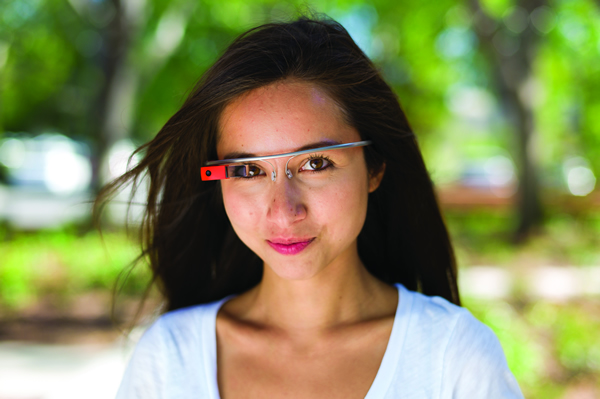Walter Hale considers developments in what has so far been seen as a faddish sector, and looks at how it could impact upon your business.
Is wearable technology going to change the world? Or is it - like the portable travel hammock - just a fad? Like every new technology, wearable technology’s transformative impact has been trumpeted by a crowd of hucksters, suppliers and consultants. The relative failure of Google Glass - have you seen anyone using it in the UK? - has reinforced the cynicism. In essence, naysayers argue, we can see why a variety of companies would like to sell us this technology, but does anybody actually want to own it?
It’s a good question. The very first wearable computer, invented in 1961 by MIT maths professor Edward Thorp, had a very obvious return on investment: it helped him cheat at roulette - giving him, he estimated, a 44% edge in the game. Eleven years later another American, Keith Taft, tried something similar, relying on a wearable computer called George to give him an edge in blackjack. He stopped using the device after losing $4,000 in one weekend.
Until the 21st century, the development of wearable technology has been a tale of one step forward, one step back. Pulsar, the first pocket calculator wristwatch was launched in 1975, withy the slogan: “For the man who had everything until just now.” The excitement soon died down. Nine years later, in ‘The Terminator’, the cyborg has the advantage of having computer information displayed over real life imagery - predicting Google Glass 30 years before it was invented. Wearable technology did begin to improve people’s lives, albeit not in a very glamorous way: digital hearing aids were unveiled in 1987 and, 16 years later, the first digital pacemaker was developed. At the same time, at least 50,000 wild animals have been fitted with the most basic kind of wearable technology - a chip - to track their movements. In a Big Brother application of the technology advocates prefer to ignore, hundreds of thousands of offenders in this country are electronically tagged.
The galvanising event in terms of the mass market was probably Nike’s tie up with iPod to create a sport kit that allowed users to sync their movements to their iPods. To cement the deal, Nike launched several items of clothing with pockets designed to fit the iPod.
Yet when the next big step forward came it wasn’t from Nike or Apple but Google, which released Glass to developers in 2013. Designed to resemble the shape of a pair of spectacles, this optical head-mounted display displayed information in a smartphone-like hands free format and allowed wearers to communicate with the internet through voice commands.
The device prompted concerns over privacy (the facial recognition technology could enable the wearer to identify other people), safety (how distracting might the information be while driving?) and the terms of service (you paid Google for the device but they retained the right to reclaim it any time). Last year, the search engine giant announced it would no longer sell the Glass prototype but it hasn’t given up - and has filed a patent in the US for a new version.
Apple’s Watch has also been dubbed a flop, seen as too slow, unoriginal and not bold enough to be a breakthrough product. There’s some merit in all of those criticisms and yet, Apple still sold 12m watches in its first year, double the first year iPhone sales of 6m.
Despite such setbacks, it is far too early to write off wearable technology. As new as the technology it is, it is already reinventing itself. The talk now is of the need to look beyond gadgets and headsets and incorporate what some analysts prefer to call ‘ubiquitous computing” into the fabric. So, for example, Ralph Lauren has unveiled technology-enabled tennis shirts that monitor heart rate, breathing and stress levels. Even Google is exploring this approach, teaming up with Levi’s on a development called Project Jacquard, a fabric made of yarns that can interact with smartphones and other digital devices. The new emphasis makes sense in that it enables brands and designers to create something ‘smart’ that is aesthetically pleasing to those consumers, who balk at headsets and watches. To give you just one example, avant garde designer Iris van Herpen’s winter 2015 collection wowed buyers and media with such technology-infused materials as translucent meta-weaves of stainless steel and silk.
Respected fashion technologist Dr Amanda Parkes summed up the new thinking eloquently in an interview with the ‘Business of Fashion’, saying: “I define wearable tech as an enabling interactivity around the body. The Apple Watch is an elegant state of the art piece of interactive technology but it exists in the domain of taking a smartphone and attaching it to our body. The gadgets you see in the market today represent only a sliver of what is possible. Wearable technology does not have to involve traditional circuits and batteries. Fibre science is wearable technology in its purest form and, with the development of new smart textiles combining multiple layers of functionality, we will see the true integration of fibres and electronics.”
Once you stop thinking about gadgets and consider fabrics, the opportunities for ‘ubiquitous computing’ are so much greater and more transformative. Why not embed digital capability into a piece of large-format print, as some pioneers are doing already? Parkes urged fashion companies to “get engaged and invested in the future of your own industry”. The same message could apply to providers of digital and wide-format print.


